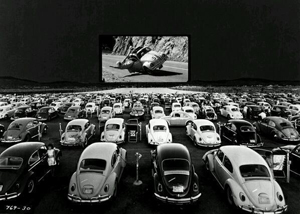by Andrew Einspruch
Filmmaker Andrew Einspruch attended Screen Forever 2013, the conference of Screen Producers Australia, this past year and wrote a series of articles for the event, which he’s kindly allowing us to reprint here. These articles originally appeared in Screen Hub, the daily online newspaper for Australian film and television professionals.
The world of content and culture is moving online. And search giant Google is in the driver’s seat to know what the trends are. But the digital world unfolds in a fraught way for many creators. In the opening session of this year’s Screen Forever conference, Derek Slater, Global Public Policy Manager, Google USA, gave a glimpse into this changing world, as viewed by the advertising behemoth. Andrew Einspruch reports.
100 hours.
That’s how much content currently gets uploaded to YouTube every minute. That`s a week`s worth of viewing in less than two minutes, and a year`s worth in less than two hours. That`s the supply side.
On the demand side, six billion hours get watched every month, or just under an hour per person on the planet, whether they have an Internet connection or not. It is a staggering change to the world, especially when you consider that YouTube did not exist nine years ago.
Google USA`s Derek Slater, a self-confessed fan of the Australian show “Frontline,” discussed this boom in creativity, and put it in the context of creators and money. Put simply, you have more content creators than ever before, and more ways for them to make money from all the connected consumers out there. He cited statistics that said digital music revenue was more than $5.6 billion in 2012, and that digital movies were nearly 30% of revenue in the US in 2012, up from 19% in 2011. Ebooks show a similar jump, with 457 million sold in 2012, up 43% from 2011.
It is still a developing market, but it represents a massive shift from the previous decade.
Slater also described Australia as a huge net exporter of video, with eight times as much Aussie video consumed off-shore than on-shore. Looked at differently, twice as much Australian content is consumed in the US than in Australia. From Slater`s perspective, it shows that local content is thriving, and contributing to a trade surplus in that category.
 A creative life is a precarious thing. Actions occur that could profoundly effect your ability to earn a living doing what you love. We get blindsided again and again, sometimes not recognizing things until they are too late to alter them. It’s one of the reasons I have tried to meticulously track for you what are the good thing and bad things happening in indie film these days. Yet, it seems to me we all need to do a better job of tracking them if we don’t want to get trapped in a future we won’t be part of..
A creative life is a precarious thing. Actions occur that could profoundly effect your ability to earn a living doing what you love. We get blindsided again and again, sometimes not recognizing things until they are too late to alter them. It’s one of the reasons I have tried to meticulously track for you what are the good thing and bad things happening in indie film these days. Yet, it seems to me we all need to do a better job of tracking them if we don’t want to get trapped in a future we won’t be part of..

 As I alluded to in a
As I alluded to in a 
